Check the pad thickness through the cylinder inspection hole. If the pad lining thickness is out of specification, replace the pads.
Standard value | Service limit | |
Pad lining thickness mm (in.) | 10.5 (0.413) | 2.0 (0.079) |
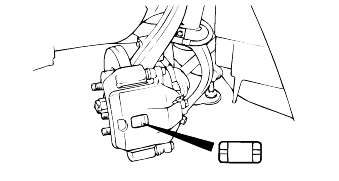
Remove the wheel and tire.
Check the pad thickness through the cylinder inspection hole. If the pad lining thickness is out of specification, replace the pads.
Standard value | Service limit | |
Pad lining thickness mm (in.) | 10.5 (0.413) | 2.0 (0.079) |

Remove two bolts from the carrier and remove the brake cylinder.
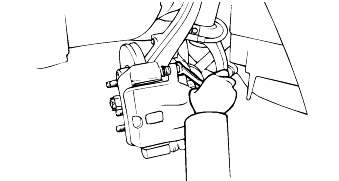
Remove the brake cylinder and suspend it with wire.
Do not disconnect the brake hose.
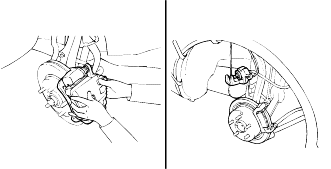
Remove the pads.
Be careful not to depress the brake pedal while disassembling the pads.
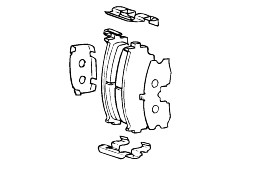

Install the pad clips.
Install the pads onto each pad clip.
All four pads must be replaced as a complete set.
When replacing the brake pad, check for deformation and then replace the guide spring with a new one or use it again after removing foreign material.
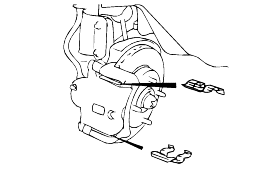
Press in the piston with a hammer handle or equivalent.

Lower and insert the brake cylinder carefully so as not to damage the boot.
Install the two guide rod bolts and tighten.
Tighten the connections to the specified torque.
Guide rod bolt : |
22-32 Nm (220-320 kg·cm, 16-24 lb·ft) |
Install the pads and brake cylinder.
Install the brake hose to the caliper.
Bleeder screw tightening torque : |
7-9 Nm (70-90 kg·cm, 5-7 lb·ft) |
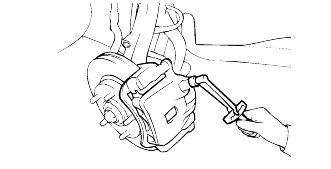
Fill the brake reservoir with brake fluid.
Bleed the system.
Loosen the caliper attaching guide bolts and separate the caliper.
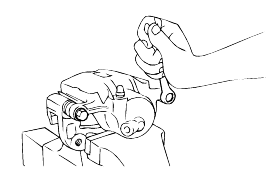
Remove the boot ring using a flat blade screwdriver.
Remove the piston boot.

Remove the piston by applying compressed air through the brake hose fitting hole.
Do not place your fingers in front of the piston when using compressed air.
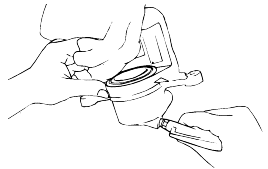
Using a screwdriver, remove the piston seal carefully so as not to damage the cylinder wall.

Clean the outer surface of the piston and the inner surface of the cylinder with the specified brake fluid.
Check the pads for wear or oil contamination.
Replace or correct if necessary.
Check the shims for damage or deformation.

Check the caliper body cylinder inner surface for wear, damage and/or corrosion.
Check the piston for wear, damage and/or corrosion.
Check the caliper body and sleeve for wear.
Check pads for deformation, metal backing for damage, and for oil on the pads.
Check the carrier for damage, rust, wear and cracks.
Inspect the brake disc using a dial indicator and micrometer. Machine or replace as necessary.
Standard value | Standard limit | |
Thickness of disc mm (in.) | 26 (1.02) | 24.4 (0.96) |
Runout of disc mm (in.) | - | 0.03 (0.0012) |
Disc thickness variation | - | 0.005 (0.0002) |

If necessary, replace the brake disc.
Jack the vehicle up and support it with jack stands.
Remove the wheel and tire.
Remove the front wheel brake assembly from the knuckle and suspend it with a wire.
Remove the front disc from the hub.
Remove the caliper support bolts, then raise the caliper assembly upward and secure by using wire.
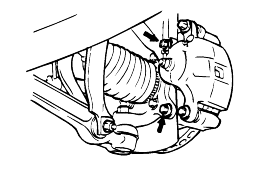
Inspect the disc surface for groove, cracks, and rust. Clean the disc thoroughly and remove all rust.
Place a dial gauge approximately 5 mm (0.2 in.) from the outer circumference of the brake disc, and measure the runout of the disc.
Limit : 0.03 mm (0.0012 in.)
Tighten the nuts in order to secure the disc to the hub.

If the runout of the brake disc is equivalent to or exceeds the limit specification, replace the disc and hub, and then measure the runoutagain.
Before removing the brake disc, chalk both sides of the wheel stud on the side at which the runout is greatest.
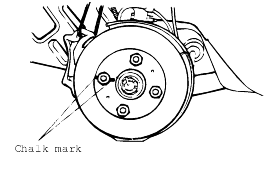
Remove the brake disc, and then place a dial gauge as shown in the illustration; then move the hub in the axial direction and measure the runout.
Limit : 0.03 mm (0.0012 in.)
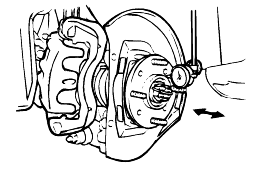
If the play is equivalent to or exceeds the limit, disassemble the hub knuckle and check each part.
If the play does not exceed the limit specification, install the brake disc at a position 180° from the chalk mark, and then check therunout of the brake disc again.
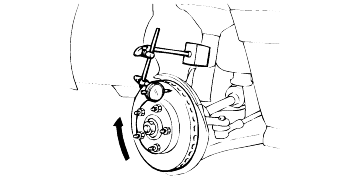
If the out cannot be corrected by changing the position of the brake disc, replace the brake disc.
Using a micrometer, measure disc thickness at eight positions, approximately 45° apart and 10 mm (0.39 in.) from the outer edge of the disc.
Brake disc thicknes
Standard value : 26 mm (1.02 in.)
Limit : 24.4 mm (0.96 in.)
Thickness variation (at least 8 positions)
The difference between any thickness measurements should not be more than 0.005 mm (0.0002 in.).
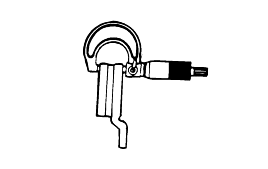
If the disc is beyond the limits for thickness, remove it and install a new one.
Remove the wheel and tire.
Remove the brake hose from the caliper.
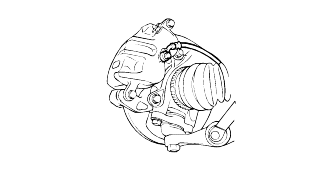
Remove the caliper assembly.
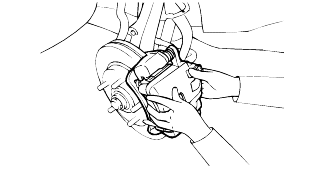
Clean the components with isopropyl alcohol except for the pad and shim.
Install the piston seal.
After applying the specified brake fluid to the piston outer surface, install the piston into the cylinder.
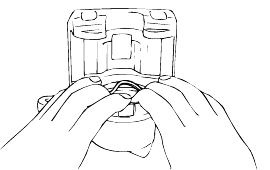
Install the piston boot and boot ring.
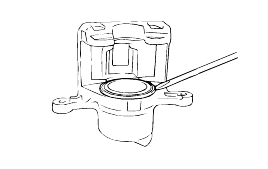
Install the guide pin boots and guide pin.
